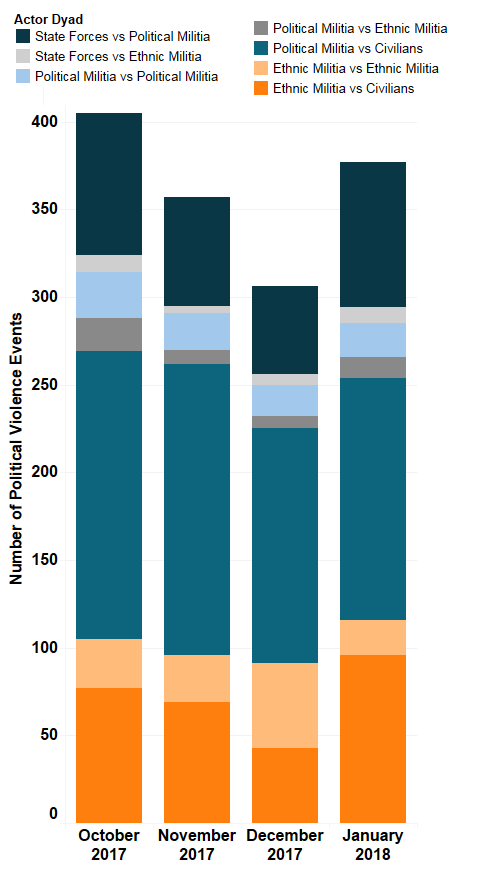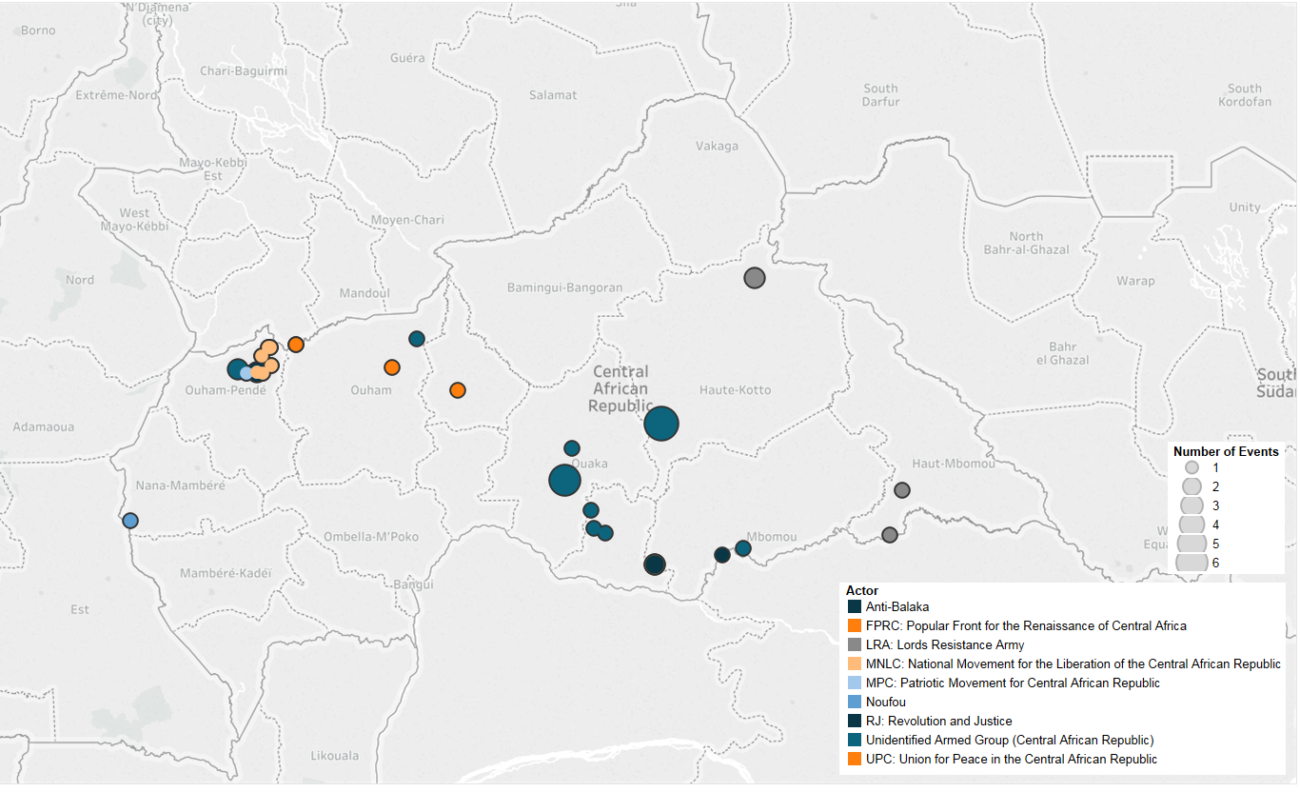Across Africa in January 2018, political violence and protest levels rebounded from the lull in December 2017. This regional pattern is predominantly driven by a 38.5% increase in protest levels, where regional coordination between movements is provoking tougher government responses in anti-TPLF protests in Ethiopia, as well as in Tunisia and South Africa. Political violence-related fatalities remain at their lowest level in over a year, continuing to decrease from a high of 2,863 in May 2017 to 1,751 in January 2018. An Islamic State attack on a Sufi mosque accounted for over 300 fatalities in November 2017, while a massive military campaign by Nigerian state forces to clear Boko Haram elements from Borno State led to at least 111 deaths in early January. Intra-clan militia violence in Sanaag, Somalia and al-Shabaab attacks against domestic and AMISOM forces led to 227 fatalities.
Battles decreased overall but non-state activity increased as ethnic and communal militia groups escalated civilian-targeted attacks (see Figure 1). In Nigeria, Fulani herders targeted Bachama and Irigwe populations in Benue, Taraba and Plateau State. Elsewhere, several tit-for-tat clashes between non-state groups punctuated Central African Republic, where MPC: Patriotic Movement for the Liberation of the Central African Republic and RJ: Revolution and Justice clashed in Ouham Pende (see Figure 2).

Figure 1: Political Violence by Actor Dyad, Africa, October 2017 – January 2018
Increased ADF activity in Nord-Kivu and Mayi Mayi militia (Yakutumba) activity in Sud-Kivu and Katanga were the dominant driver of violence in Democratic Republic of Congo. Though less violent than Nigeria, Somalia and the Central African Republic, clashes between Nduma NDC-R: Renewal and the newly emergent splinter group NDC-M: Mandaima in Walikale territory highlights the large number of active armed groups destabilising the DR-Congo.

Figure 2: Number of Events by Non-state Armed Groups in Central African Republic, 2018






